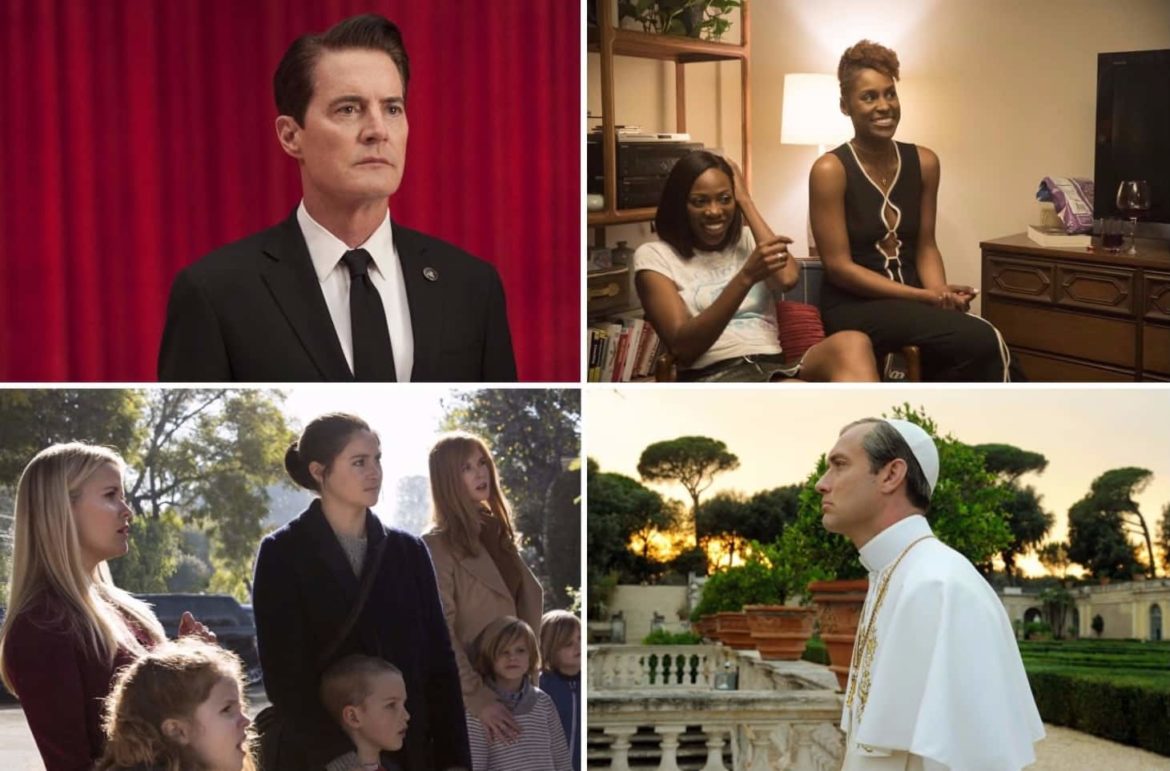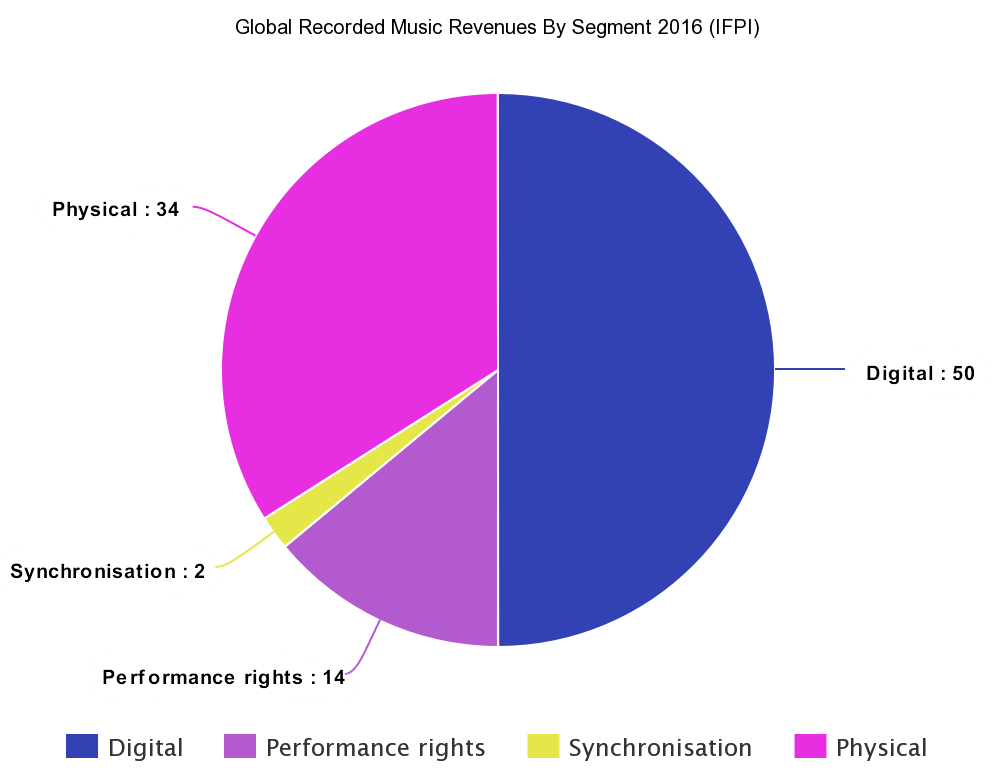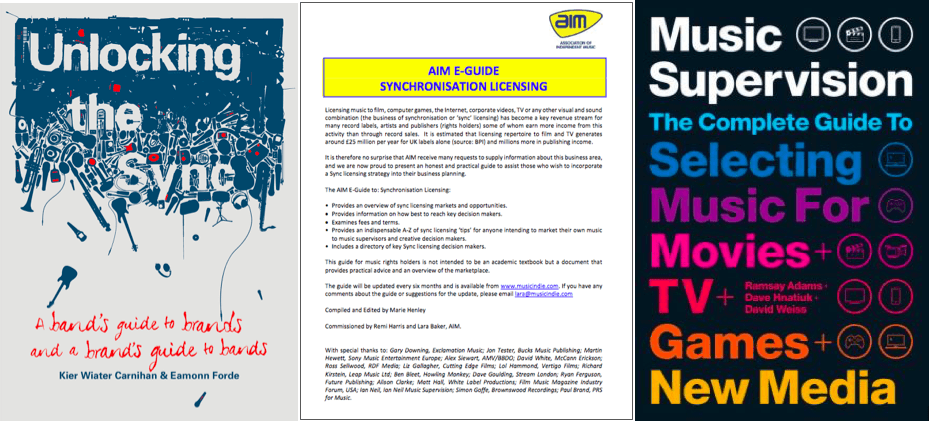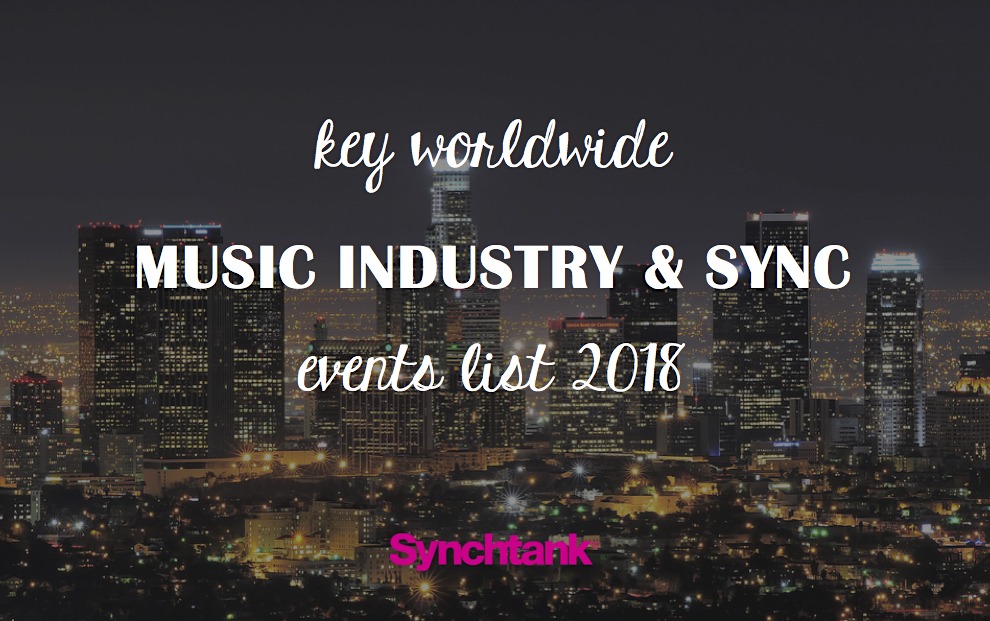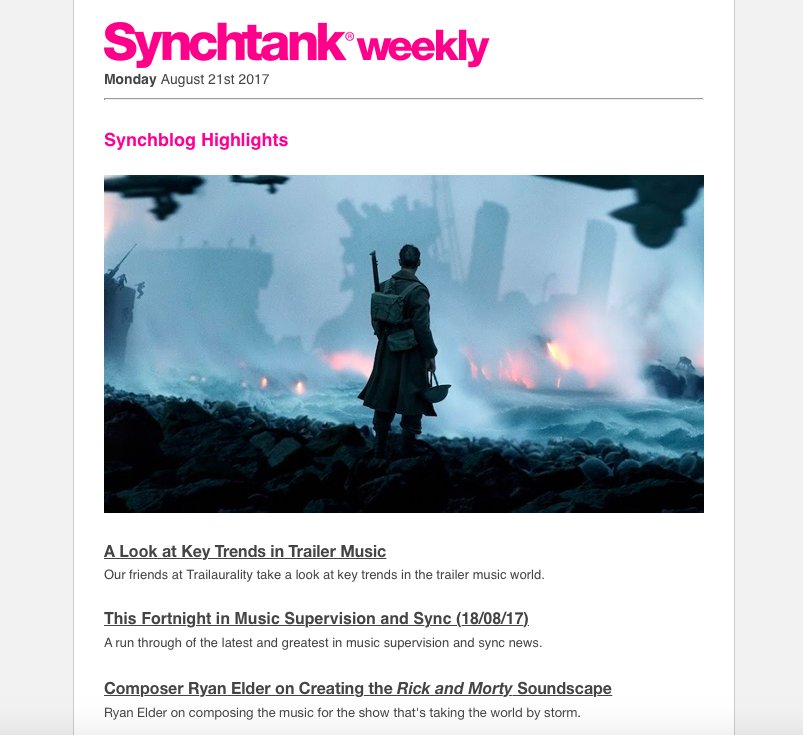The business of sync licensing remains a key revenue stream for music rights holders. But what did this year hold for the sync sector? We take a look through some of the figures and trends in 2017.
The numbers
According to the IFPI 2017 Digital Music report, sync maintained its 2% share of the global recorded music market in 2016, growing by 2.8% (compared to 7% in 2015).
The US is the world’s largest sync market, accounting for 57% of revenues in 2015 (according to the IFPI), while other standout territories included the UK, France and Japan.
The UK sync market alone was estimated to be worth around £80 million across the recorded music and music publishing sectors in 2016, according to the BPI.
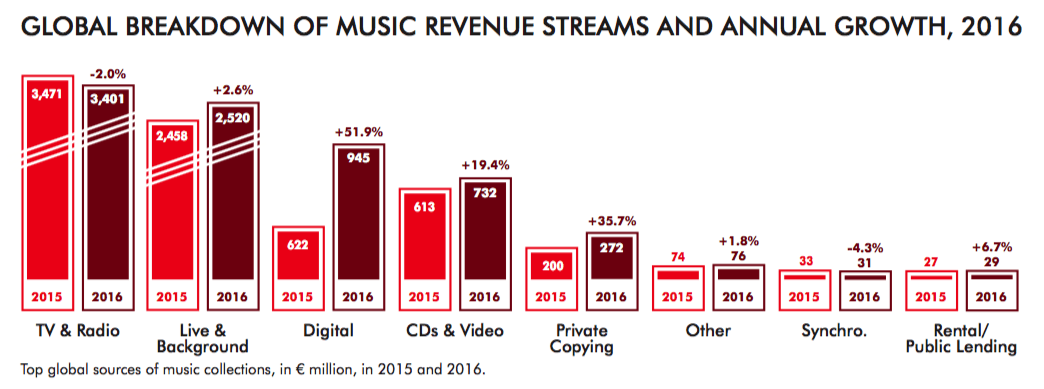
Source: CISAC
According to CISAC’s 2017 Global Collections Report, which represents authors’ rights societies internationally, royalties from sync generated €31 million in 2016, down 4.3% on 2015.
It’s worth mentioning that the direct sync deals conducted between music publishers and media companies are not shown in these stats, and therefore these reports do not represent the full value of the sync market.
Film & TV
TV in particular is currently undergoing a profound period of disruption led by the SVOD revolution. Netflix alone has up to 109 million subscribers as of Q3 2017, and has proven to be as popular as pay TV in the US, according to a recent PwC report. With plans to spend $8 billion on programming next year, making 50% of its library original, the market leader is going nowhere in a hurry.
Amazon is keeping up, recently forking out a whopping $1 billion to bring a Lord of the Rings TV show to Amazon Prime, and predicted to spend more than Netflix on original content by 2022. Apple is also positioning itself as a competitor in the VOD space, and is projected to ramp up its content spending to $4.1 billion by 2022. Hulu is another platform to watch, as are Facebook, YouTube and Spotify, who are all looking to participate in the video content streaming game. Then of course there’s Disney, whose recent deal with 21st Century Fox will enable it to better compete with its subscription streaming rivals.
Digital platforms have also transformed how the world watches films. Summer box office revenues were the worst in over a decade this year, with consumers looking more and more to VOD platforms, and film studios now flirting with the idea of Premium Video On Demand, or P-VOD, a service that would allow subscribers to watch blockbuster movies at home on the same day as their theatrical release. MIDiA research predicts that churn will become a big deal for SVOD services in 2018, and that we’ll also see the rise of new streaming offerings from traditional TV companies and new entrants that will deliver free-to-view, often ad-supported, on-demand streaming TV.
This explosion in content budgets and streaming platform adoption is obviously good news from a music licensing perspective, and 2017 has been hailed a huge success in terms of film and TV score/soundtrack popularity. From Baby Driver to Stranger Things, film and TV is driving music discovery in more ways than ever, with the role of the music supervisor also becoming more recognised. Production music usage is also seeing a significant uptake thanks to the digital content boom, with Production Music Association’s Joe Saba calling it a “$1 billion global industry hidden in plain sight”. Film/TV (and games) trailers also remain another high profile source of sync income for the music industry (check out our coverage on trailer music trends here).
Tunefind 2017 stats:
- Farewell: Top TV Shows for Music Discovery that Ended in 2017
- Hello: Top New Shows of 2017 Driving Music Discovery
- Fan Favorites: Top Movie Soundtracks of 2017
- Tunefind Releases List of Top TV/Film Syncs of 2017: Kaleo, Lord Huron Lead
This year’s viewing stats:
- What America Loved to Watch in 2017, According to Comcast’s VOD Ratings (Vulture)
- Netflix stats: what was ‘devoured’ and ‘savoured’ in 2017 (TBI Vision)
- The Top TV Shows of 2017 (MIDiA Research)
2017 round-ups:
- “Soundtracks are coming back again, there’s some hope in it”: Inside the rise and rise of TV soundtracks in 2017 (Music Week)
- The 10 Best Music Moments on TV in 2017 (Pitchfork)
- 10 Best Uses of Music in Movies in 2017 (Variety)
Video Games
The record industry may have suffered in recent years, but the gaming industry continues to boom. In 2016, global video game revenues totalled US$104.8 billion (compared to the US$15.7 billion generated by global recorded music revenue), with revenues projected to hit $143.5 billion by the end of 2020, according to Game market researcher Newzoo.
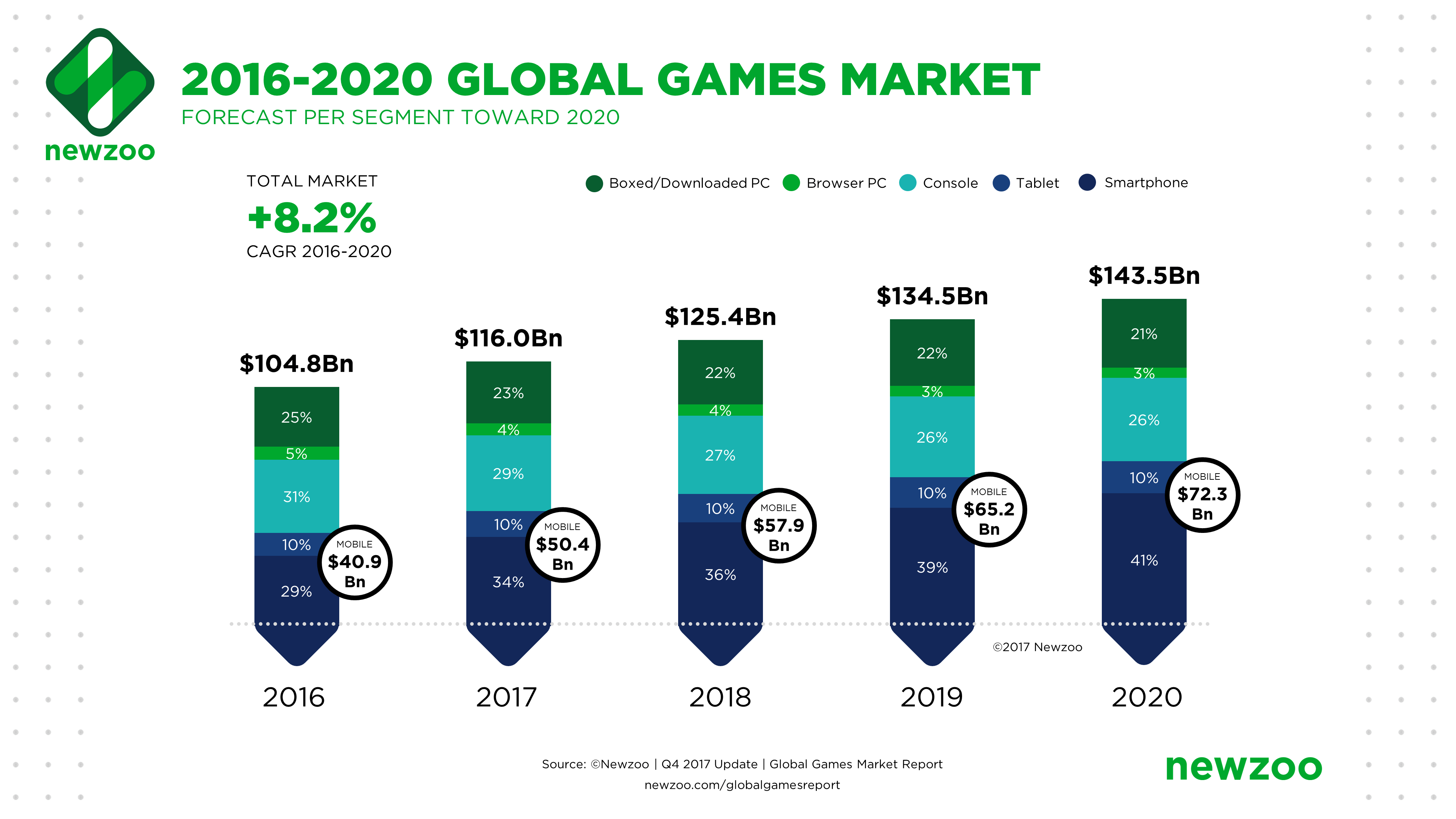
Music is an integral part of most games, providing the music rights marketplace with plentiful licensing opportunities. According to AIM‘s Guide to Sync, “The gaming market can be very lucrative and is easy to target, but does tend to be more specific in the music that it licenses.” This year has seen a growing trend for independent games producers to team up with independent artists. UK trio Daughter, for example, composed their first OST for Square Enix’s new game, Life Is Strange: Before The Storm (as covered in Music Week). Video game music seemed to finally get the mainstream recognition it deserves in 2017, with radio shows like Classic FM’s High Score and Red Bull’s Diggin’ in the Carts partially responsible.
Despite such a growth in video game adoption, it seems brands are only beginning to scratch the surface when it comes to relationships with the music world. The time to dive deeper into strategic partnerships between music and games is now, while they are still seen as innovative and before the landscape becomes saturated. eSports is also a high growth market that the music industry should be looking to financially benefit from in 2018.
2017 round-ups:
- The top 5 video game scores of 2017 (Classic FM)
- The 10 best video game soundtracks of 2017 (FACT Magazine)
- GamesIndustry.biz presents… The Year In Numbers 2017 (GamesIndustry.biz)
Advertising
Advertising remains the most lucrative yet most competitive area of sync, particularly in the US. Some of the biggest advertising sync opportunities of the year are centred around sporting events like the Super Bowl, music events including The Grammys, and of course the holiday season.
As well as straight out placements of songs in adverts, artist-brand partnerships are becoming more prevalent and are fuelled by digital platforms. “People are looking for opportunities to organically build the artist’s brand or build the album or single cycle”, explains Kobalt’s president of global sync and brand partnerships Jeannette Perez in an interview with Music Week. “A brand partnership is a way to do that, but again it has to be the right brand with the right artist. There are plenty of brand partnerships that happen that you don’t ever hear about, but the ones you do hear about are the ones that are done really, really well.”
Brands are increasingly looking to the music world to create short form branded content. Take KFC’s “VS” series, which brought grime MC’s and top gamers together and won agency BBH a Music Week Sync Award for Best Social Media/Online Partnership. According to Rich Robinson, SVP of sync at Warner Music Group for the UK and EU, the most important element to consider in a music/brand partnership is a “genuine value exchange” between the two parties.
Interesting reads and 2017 round-ups:
- The 8 Best Songs That Got Ad Placements This Year (Baeble music)
- Songs for Screens: The Best Ad Synchs of 2017, Featuring Peggy Lee, Sia, Cher, Lil Yachty and More (Variety)
- Billboard & Clio Music’s Top Commercials of the Year, Powered by Shazam (Billboard)
- Best of TV Ad Music 2017 (TV Ad Music)
- The golden rules for music brand partnerships according to ATC’s Gary Cohen (The Drum)
- Artists making money from music: sync, brands… and gin! (Music Ally)
New opportunities to watch
VR/AR and immersive content
VR entertainment adoption may be far from mainstream, but it’s definitely an area to keep an eye on as a music rights holder. At a recent PRS event documented by M Magazine, Parable VR’s Nicholas Minter-Green outlined the opportunities that VR can provide:
“Think about all these virtual rooms that are going to be created where your music will play, that would never have existed. There may well be challenges about exploiting every last percent of the rights, but the good side is that there’s going to be almost an infinite new set of places where music can be experienced.”
VR start-up MelodyVR have already signed licensing deals with Sony Music, Roc Nation and Universal, and just this week Facebook signed a multi-year licensing deal with Universal which will cover music used in Oculus virtual-reality content. Magic Leap, the Florida startup that has made huge promises for its augmented reality technology, has also just unveiled a release plan for the first version of its product, and has been working with Sigur Rós on a new audiovisual project called Tónandi. Every week there’s news of a different deal or artist partnership, so its worth subscribing to sites such as VRFocus for the latest news and opportunities. Music Ally is another great source of information for this area.
Continued increase in short-form UGC
As consumers and creators we are consuming and uploading more video than ever before. Currently more than 500 million hours of videos are watched on YouTube each day, and according to one source, more video content is uploaded in 30 days than the major US television networks have created in 30 years. What does (most) of this UGC have in common? Music. This provides rights holders with an enormous amount of micro-licensing opportunities if they set up the right infrastrcture to facilitate this (either in-house via platforms like Synchtank or through a third party). Whether it’s short films, clips on YouTube/Facebook or even corporate videos, rights holders can make a good living on royalties generated by these increasing opportunities.
Useful resources
You only have to read our blog and fortnightly sync and music supervision news roundups (subscribe to our newsletter to stay up to date with those) to know there are some great sync resources out there. Some of our favourites this year include:
Unlocking The Sync: A band’s guide to brands, and a brand’s guide to bands (MusicTank)
An ethical ‘how-to’ navigation of the music licensing and brand partnerships and packed with information and links to resources, this book is set to become the defining text containing leading insight into the worlds of music, synchronisation and brands.
AIM’s E-Guide to Synchronisation Licensing (MusicTank)
If you’re a record label looking to maximise revenue from licensing your music to adverts, films, TV and computer games, you need AIM’s E-Guide to Synchronisation Licensing.
Music Supervision 2: The Complete Guide to Selecting Music for Movies, TV, Games, & New Media (
The newly revised, definitive book on music supervision, which guides you through real-world scenarios and legal landmines, explores sound design, and profiles key players.
From Pitch to Placement: The Essentials of Sync Licensing (Synchblog)
We run through the best practices for preparing your catalogue for licensing, tips for pitching successfully, building relationships with music supervisors, and much more.
How To Get A Sync In 9 (Easy) Steps (M Magazine)
Sentric Music’s Simon Pursehouse lifts the lid on all manner of mistakes artists can make in sync and explains how to rise to the top in an insanely competitive corner of the industry.
Events
We’ve put together the most comprehensive list out there of key music industry and sync events worldwide in 2018. Bookmark it now.
